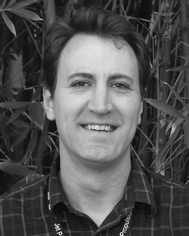Atmospheric chemistry†
Dwayne E.
Heard
*a and
Alfonso
Saiz-Lopez
*b
aSchool of Chemistry, University of Leeds, Leeds, LS2 9JT, UK. E-mail: d.e.heard@leeds.ac.uk
bLaboratory for Atmospheric and Climate Science (CIAC), CSIC, 45007 Toledo, Spain. E-mail: a.saiz-lopez@ciac.jccm-csic.es
 Dwayne E. Heard | Dwayne Heard has worked at the University of Leeds since 1994 where he is Professor of Atmospheric Chemistry. Prior to Leeds he was a lecturer at Macquarie University, Australia, a postdoctoral fellow at SRI International, Menlo Park, and he did both his postgraduate and undergraduate degrees at Oxford University. His research interests include laser-based measurements of short-lived radicals in the atmosphere from surface- and aircraft-based platforms, and comparison with model calculations, and the study of the reaction kinetics and photochemistry of important molecules in the atmosphere. His group has participated in over 25 field campaigns worldwide since 1996. |
 Alfonso Saiz-Lopez | Alfonso Saiz-Lopez studied Chemistry in Ciudad Real, Spain. In 2005 he received his PhD in atmospheric physical chemistry at the University of East Anglia. After a brief postdoc at the University of Leeds, he was a NASA Postdoctoral Scholar at the Jet Propulsion Laboratory and Research Associate at Harvard-Smithsonian Center for Astrophysics. In 2009 he moved to Toledo, Spain, where he was appointed Senior Research Scientist and currently heads the Laboratory for Atmospheric and Climate Science at the Spanish Research Council (CSIC). Since 2009 he is Affiliate Scientist at NCAR. His research group focuses on atmospheric measurement, modeling and laboratory studies of halogens, and their impact on atmospheric chemistry and climate. |
Atmospheric chemistry is concerned with understanding the fundamental processes which control the chemical composition of the natural atmosphere, and how human activities are changing both its chemical and physical properties. As an interdisciplinary field, atmospheric chemistry makes a major contribution to understanding and predicting the impact of human activity on the composition of the atmosphere, and hence the societal response to climate change and deteriorating air quality. The detailed understanding of chemical processes is a unifying theme that requires the expertise of the laboratory, theoretical, field monitoring and numerical modeling communities. The chemistry of the air we breathe is key to understanding a number of environmental issues associated with a changing atmosphere, including global climate change, photochemical smog and air pollution, acidic deposition and stratospheric ozone destruction. For instance, all greenhouse gases except H2O vapour and CO2 are removed from the atmosphere primarily by chemical processes. Hydrogen-containing greenhouse gases, in addition to other pollutants, are mainly removed in the atmosphere by the reaction with the hydroxyl radical (OH). Other environmental issues where chemistry plays a crucial role are the transport and transformation of pollutants from regional to global scales (e.g. mercury), biogeochemical cycles of active atmospheric chemicals and alterations to the biosphere via, for example, changing the chemistry of the overlying air.
This themed issue is timely, and covers a broad range of topics covering the spectroscopy of trace gases and aerosols, chemical kinetics and photochemistry, heterogeneous and multiphase (interfacial) chemistry, measurements of trace gases and aerosol species from a variety of field platforms and simulation chambers, instrument development, development of chemical mechanisms in the gas and liquid phases, modeling from local to global scales, and the interaction of atmospheric chemistry and climate change.
The objectives of this themed issue on Atmospheric Chemistry with contributions from some of the leading researchers in the field are to reflect on progress, highlight the achievements of chemists in understanding key chemical processes in the atmosphere, and to examine future needs and research directions. This collection of tutorial and critical reviews can only provide a small and selective representation of a large number of exciting developments in a rapidly expanding field.
John Orlando and Geoff Tyndall (DOI: 10.1039/c2cs35166h) review laboratory studies of organic peroxy radical species and their role in the oxidative capacity of the troposphere, with particular emphasis on peroxy radicals derived from biogenic hydrocarbons. Models require rate coefficients and product branching ratios for each step in chemical schemes on which they are based, and Tony Cox (DOI: 10.1039/c2cs35092k) discusses how chemical kinetics and photochemical data are evaluated for inclusion in these models, the on-line databases which are available to assist the construction of mechanisms, and recent specific examples of improvements to our knowledge of kinetic data. Theoretical methods using quantum chemistry are becoming increasingly important, and Luc Vereecken and Joe Francisco (DOI: 10.1039/c2cs35070j) describe results relevant to the atmospheric chemistry of a wide variety of reactive radicals and intermediates. The atmospheres of the giant planets in our solar system and their moons also contain a rich chemistry, and in their review Mark Blitz and Paul Seakins (DOI: 10.1039/c2cs35204d) discuss kinetics and photochemical studies in the laboratory for gas-phase reactions pertaining to these atmospheres, and compare and contrast with the chemistry of Earth's atmosphere.
Daniel Stone, Lisa Whalley and Dwayne Heard (DOI: 10.1039/c2cs35140d) review field measurements in the troposphere of the concentration of the hydroxyl radical, the most important daytime oxidant, and its chemical cousin, HO2, and comparisons with the calculations of constrained models, for a variety of environments from tropical forests to polar regions. Steve Brown and Jochen Stutz (DOI: 10.1039/c2cs35181a) review nocturnal chemistry, which often is dominated by the nitrate radical, and provide insights into the main features of this chemistry using available observations in the laboratory and the field, together with modeling studies. Alfonso Saiz-Lopez and Roland von Glasow (DOI: 10.1039/c2cs35208g) review the current knowledge in reactive halogen sources, release and activation mechanisms, measurements and modelling at local, regional and global scales of the impacts of reactive halogen chemistry on the oxidative capacity of the troposphere. The oceans play a large role in determining the composition of the atmosphere and Lucy Carpenter, Stephen Archer and Rachael Beale (DOI: 10.1039/c2cs35121h) review the physical, chemical and biological controls on sea-air emissions, including global emission budgets, of a range of gases which are either greenhouse gases or influence aerosol formation and the concentrations of oxidants. Cosmic dust brings a variety of elements into our atmosphere, and John Plane (DOI: 10.1039/c2cs35132c) discusses the methods used to quantify the mass input of dust particles into the atmosphere and the rich chemistry which ensues following their ablation in the atmosphere, notably of metals, and subsequent impacts.
Ben Murray and co-workers (DOI: 10.1039/c2cs35200a) review and assess the current understanding of ice nucleation by particles immersed within supercooled water droplets, a process which determines the properties of clouds, and which is poorly understood. Jon Abbatt, Alex Lee and Joel Thornton (DOI: 10.1039/c2cs35052a) review experimental studies of the interactions of trace gases with tropospheric aerosols, which have a significant impact on gas phase and aerosol composition, but which require careful interpretation. Paul Ziemann and Roger Atkinson (DOI: 10.1039/c2cs35122f) review the existing knowledge on the kinetics, products and mechanisms of secondary organic aerosol formation, providing sufficient information to interpret laboratory and field results, and to further develop atmospheric chemistry models. In their review, Mathew Heal, Prashant Kumar and Roy Harrison (DOI: 10.1039/c2cs35076a) explore the links between microscopic aerosols, air quality, policy and human health, with particular emphasis on aerosol composition and source apportionment, and the legislative response to protect the public from adverse health effects. Uli Krieger, Claudia Marcolli and Jonathan Reid (DOI: 10.1039/c2cs35082c) explore the complexity of aerosol particle properties and processes from an experimental perspective using innovative methods with single aerosol particles.
Arlene Fiore and co-workers (DOI: 10.1039/c2cs35095e) provide a global perspective on the coupling of air quality and climate, and the implications of the projected changes in pollutants on climate and air quality. One solution to limit the release of CO2 into the atmosphere is to use amines for carbon capture and storage (CCS), and in their review Claus Nielsen, Hartmut Herrmann and Christian Weller (DOI: 10.1039/c2cs35059a) address the gas and aqueous phase chemistry relevant to emissions that may occur following use of this technology. Eric Wolff (DOI: 10.1039/c2cs35227c) discusses the use of chemical and isotopic records from polar ice cores in providing crucial information on the temperature and composition of our atmosphere for the past 800![[thin space (1/6-em)]](https://www.rsc.org/images/entities/char_2009.gif) 000 years, and discusses changes in past climate and environment from analysis of ice cores and upper firn layers of ice sheets.
000 years, and discusses changes in past climate and environment from analysis of ice cores and upper firn layers of ice sheets.
We hope that these representative reviews will inspire further developments by atmospheric chemists as they face the challenges presented by a changing atmosphere, and will provide an introduction and insight to the subject for non-experts, in particular younger scientists. We would like to thank all the authors who agreed enthusiastically to contribute reviews to this themed issue of Chemical Society Reviews and the Editor, Dr Robert Eagling, and the Deputy Editor, Joanne Thomson, for their continued support throughout the process.
Footnote |
| † Part of the atmospheric chemistry themed issue. |
| This journal is © The Royal Society of Chemistry 2012 |
